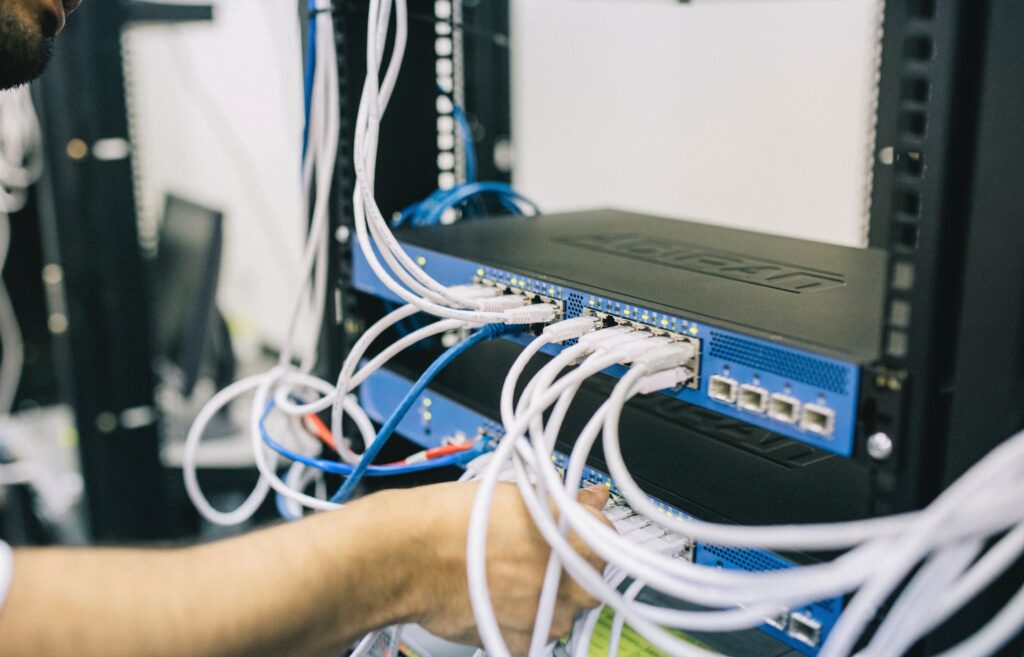Are you looking to install a new fiber optic network but need help knowing where to start? If so, you’re in luck! This beginner guide will teach you everything you need to know about armored fiber optic cable, from the basics to the more advanced topics. We’ll cover everything from the different types of armor to the advantages of using this type of cable. By the end of this guide, you’ll have everything you need to make an informed decision about whether armored fiber cable is suitable for your project.
What is armored fiber optic cable?
It is a data transmission cable incorporating unique materials and techniques to enhance security. This type of cable is used in high-risk areas, such as military bases and nuclear power plants, where the risk of sabotage or attack is high.
The main benefits of armored fiber optic cables are twofold. First, they offer enhanced protection against physical damage. Second, they provide improved resistance to electromagnetic interference (EMI). EMI can cause signals to be distorted or lost altogether, potentially disrupting telecommunication systems.
Armored fiber optic cables are typically composed of several layers of shielding and protective material. The outer layer contains metal alloys that protect the line from mechanical damage (i.e., scratches) and electrical exposure (i.e., shorts). The inner layer consists primarily of polyamide fibers highly resistant to chemical attacks and heat distortion.
What is the difference between armored and unarmored cables?
Armored fiber optic cable is designed to protect the data inside it from outside interference. This cable type is typically used in areas with a high risk of theft or vandalism, such as banks and government buildings.
Unarmored fiber optic cable doesn’t require special protection, but it has several other advantages over armored cables. For example, unarmored wires are less expensive and more flexible than armored cables. They can also handle higher loads without breaking down, which makes them ideal for applications like video streaming and online gaming.
Which one should you choose? There is a vague answer because each situation requires a customized solution. If security is your top priority, then armored fiber optic cable may be your best choice. However, if cost or flexibility is more important, unarmored fiber optics better suit your needs. The best way to find out is to ask your telecom provider what type of protection their cables have (if any).
Benefits of an armored fiber optic cable
An armored fiber optic cable is a type of cable specifically designed to protect it from external damage. This protection comes from an armor layer that uses physical and chemical barriers to keep out threats like water, dirt, oil, and other contaminants.
This extra layer of security is crucial for businesses that rely on data transmissions across long distances or hostile environments. It can also help reduce the risk of data theft or loss due to natural disasters such as hurricanes or floods.
There are several pros of using an armored fiber optic cable, including:
– Reduced susceptibility to damage caused by moisture, dirt, oil spills, etc.
– Increased reliability when transmitting sensitive information over long distances without fear of interception or attack
– Improved performance. This is vital when connecting systems under challenging locations (e.g., underground)
-Enhanced security and privacy. Armored fibers can protect data from unauthorized access or interception while providing users with a degree of privacy.
– Reduced cost. Armored fibers transmit data at higher speeds and capacities than standard cables, which reduces the cost of transmission overall.
What are the types of armored cables?
There are two primary types of armored cables: aluminum wire armor and steel wire armor.
Aluminum wire armor is made from a particular type of aluminum that is highly resistant to corrosion and damage. This makes it the ideal cable protection for applications where high-speed data transmission or long-distance telephone service is required, such as telecom infrastructure, telecommunications towers, naval vessels, and aircraft carriers.
Steel wire armor protects against physical damage (such as cuts) and electromagnetic interference (EMI). It consists of small pieces of metal called wires wrapped around an inner core of plastic or other sturdy material. The outer coating prevents contact between the wires and external elements such as moisture or dirt. Steel wire armor has several advantages over traditional copper wiring: it isn’t susceptible to fire, doesn’t corrode in harsh environments as salt water does, can handle more significant amounts of electrical current without overheating, and is harder to cut through than copper wiring.
What is an armored cable made of?
Armored fiber optic cable is made of a particular type of glass surrounded by an armor-like shield. This protection makes it resistant to attack and helps ensure the line remains operational in harsh environments.
The glass surrounding the fiber optics acts as an insulator, preventing heat from escaping and causing damage to the optical fibers inside the cable. The shield also guards against physical attacks, which could disrupt or even destroy the data transmitted through the line.
This innovative technology has numerous benefits for businesses and governments alike. By protecting communications infrastructure from harm, armored fiber optic cables can help keep critical networks online during natural disasters or terrorist attacks. They are also ideal for use in sensitive military installations where security should be prioritized over performance.
Is armored cable waterproof?
The waterproofing properties of armored fiber optic cable vary depending on the type and construction of the cable. However, some types of armored fiber optic cables are designed to be watertight and immune to moisture damage.
Armored fiber optic cables are made of a rigid synthetic material that protects fragile glass from damage. This prevents data transmission errors and other problems caused by water intrusion.
In general, however, it’s best not to put armored fiber optic cables near any bodies of water or other sources of moisture because they could become damaged. Instead, keep them stored away in a dry location where they will not be exposed to moisture.

